
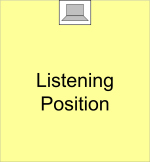
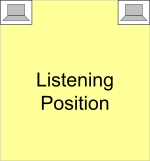
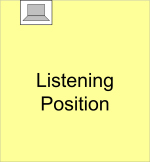
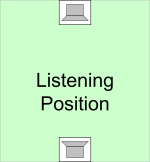
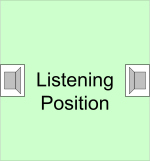
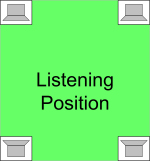
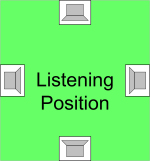
Several tests and simulations were made with similar results that certain subwoofer setups are the best choices in regular rectangular rooms.
Two parameter indicate the quality of bass reinforcement in the room: the 'Mean Spacial Variance' (the difference between individual measurement points within the listening area) and the 'Mean Output Level'. If a certain subwoofer setup creates a homogeneous sound field but a stronger general EQ is necessary to get a flat SPL response curve a higher power output is needed. If less EQ is necessary, the needed power to generate the same SPL is less too.
Optimum is a low MSV (Mean Spacial Variance) and a low necessary amp power to generate a smooth sound field over the entire listening area with a consistent SPL.
 |
 |
 |
 |
| high MSV | high MSV | high MSV | high MSV |
 |
 |
 |
 |
| low MSV | low MSV | lower MSV | best, lowest MSV |
| with EQ, less power needed | with EQ, higher power needed | ||
The worst performance (highest MSV) is achieved with the setup of one subwoofer in a room corner despite the highest SPL output because of the mutual coupling with three walls (floor and two side walls). All room modes are excited and the sound field is very uneven over the listening area. A placement on the center wall is better but only with partial improvement.
Two subwoofers on the opposite walls perform much better and with four woofers the best results can be achieved. Here the four times center setup is the best but needs some more EQ and therefore more power. With a setup of four corner woofers the sound field is slightly less homogeneous but much less power is needed because of the corner positions.
Any higher number than four of installed subwoofers generate less good results and no further improvements!